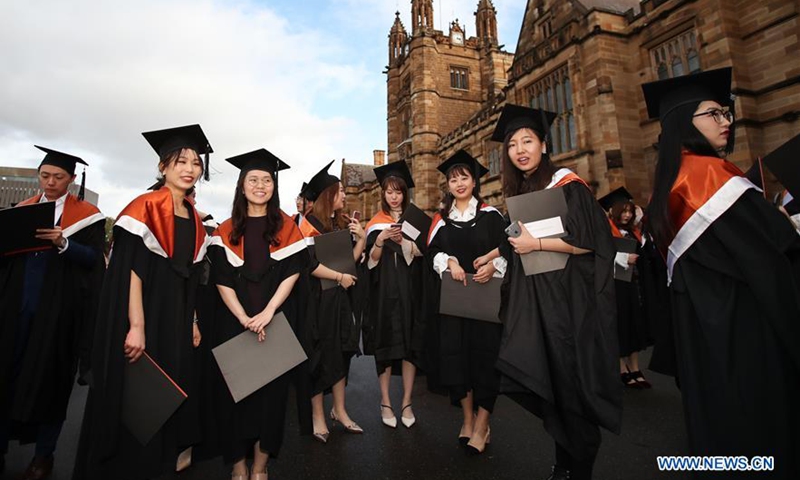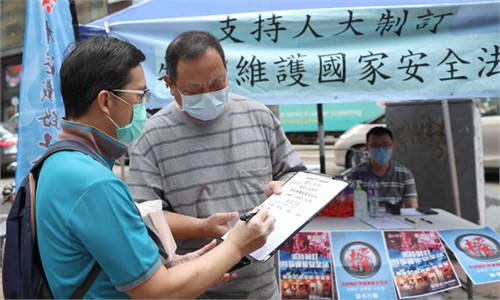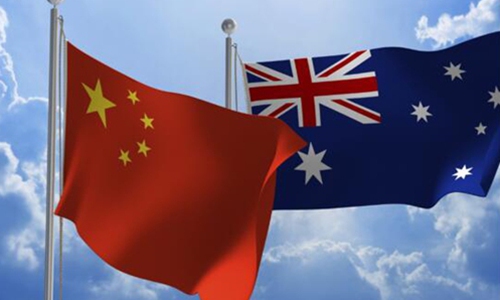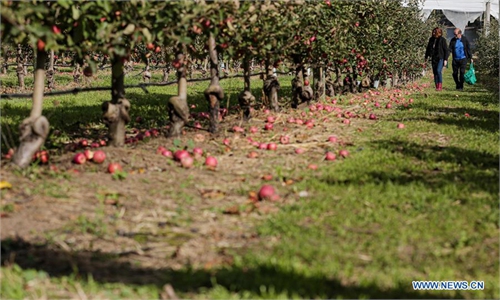Indian students 'no substitute' for Australia
Indian students ‘no substitute’ for Chinese: experts

Graduates are seen at the campus of University of Sydney, Australia, June 5, 2019. Introduced in 2010, Australia's move to a demand-driven higher education system has seen a sharp rise in university enrollments. But on Monday a new report from the federal government's Productivity Commission has highlighted that uncapping the total number of placements has also led to an increase in failure rates and a higher number of dropouts. (Xinhua/Bai Xuefei)
An Australian effort to make up for losses in its overseas student market from China, its biggest source, with Indian students faces a reality check, Chinese experts said on Monday.
Australian Prime Minister Scott Morrison is reportedly having a virtual bilateral summit on Thursday with Indian Prime Minister Narendra Modi, and one of the topics to be discussed is a new education partnership aimed at addressing Australian universities' dependence on Chinese students. The move would be part of the Australian government's years-long efforts to diversify its pool of students.
However, Chinese experts and industry insiders told the Global Times that the move by the Morrison government to save one of its key service revenue won't yield satisfactory results, as Indian students can't replace their Chinese peers in terms of consumption power.
The Australian government has been making political noise, demanding an independent inquiry into the COVID-19 outbreak in China, in a purposeful effort to smear and stigmatize China.
Looking at the numbers, it initially seems that the Australian push to replace any losses from Chinese students with Indian students could make sense.
India, the world's second-largest source of international students, had 89,181 students in Australia in 2018, with an annual growth rate of 31 percent, according to the Australian Department of Education, Skills and Employment. Another 30 percent increase was seen in 2019, when India sent 115,607 students to Australia.
In contrast, the number of Chinese students in Australia was 204,943 in 2018 and 212,264 in 2019. The growth rate of Chinese students slowed to 4 percent in 2019 from 11 percent in 2018. The inflow fell 5 percent in the first quarter of this year.
However, Guo Chunmei, an Australia specialist at China's top international relations think tank, said that the complementarity between Australia and India may not be as much as it seems.
"Despite India's large population, young demographics and high economic growth rate, its students simply don't have the same consumption power as their Chinese counterparts," Guo told the Global Times. "Australia's charm as an English-speaking country also doesn't apply to Indian students."
Jin Huiyan, an industry insider in overseas education at a major agency recruiting overseas students, said the Australian move to reduce its reliance on China is unwise as "it is impossible to resist the growing market of overseas Chinese students."
Jin said that the overall development level of the Indian economy means that Indian students could not replace Chinese students in terms of spending power, even if they could replace them on the admissions list.
"What Chinese students give Australia is not just spending on education. They also spend on real estate and travel a lot. In general, Indian students cannot bring the same level of benefits to Australia [as the Chinese]," Jin told the Global Times.
"Although Chinese students are still welcomed by Australian universities, an increasing number of Chinese students and their parents are no longer seeing Australia as a safe place for overseas study, given rising tensions between China and Australia," Guo said.
International education was worth $32.4 billion for the Australian economy between 2017 and 2018, according to the Australian Bureau of Statistics.
In 2018, Chinese students accounted for about one-third of the 400,000 foreign students enrolled in Australian universities, according to a report by the Sydney Morning Herald.




